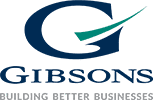How to ‘win’ in a market that isn’t growing
How Gibsons helped Pro Powder grow its profit by 600% in 10 months.
Profit is the one metric that matters most, for nearly all businesses. There are a number of measures that each business should be keeping an eye on, but deciding which ones are more critical for YOUR business requires getting under the bonnet to find out what really makes it tick.
A thorough examination of a business’s operational processes, human resource function, sales and marketing activities, core value proposition and key business drivers is required. While many tried and true theories of business management can guide you on this, the reality is often more fluid, unexpected, and industry specific.
When you are completely immersed within the operations of a business, it can be difficult to see what is actually going on. You are in effect too close to the issues to see them clearly; especially if you, like many business owners, have fallen into the trap of doing too much yourself.
Our work with Pro Powder is a stark example of the great improvements that can be made when a business invites an objective and experienced third party in to help.
A powder coating business, Pro Powder was achieving a $1.4M turnover at the time they engaged with us, but profits were barely reaching the $20K mark. The company’s owner was stretched and feeling that so much hard work just wasn’t paying off.
Despite the company operating at full capacity, its profit margin was still too low to be sustainable without burning out the owner.
Pro Powder provided our Senior Consultant, Graham Pridham, with full access to the business: its staff, operations and procedures. We assessed financial information alongside insights from discovery sessions, staff engagement and a review of business processes. Because of our extensive experience in supporting manufacturing companies, we could identify how best to support the company very quickly, saving discovery time.
Armed with practical solutions to ensure the team was fully utilised and with insights into more appropriate marketing and sales tactics, Pro Powder were able to invest more time in sourcing and targeting more profitable work. They were able to determine their “ideal” client profile to successfully reposition themselves; as well as focus on sales efforts and accountability.
It can be difficult for businesses like this to choose to invest in getting help when profit margins are so limiting, but the decision to do so can be empowering. The business is now positioned to do well, the owner feels on top of things, and the financial return on investment from third party assistance is very clear.
These are the results Gibsons strives to achieve for its clients, every time, no matter what their size at that time in their journey when they connect with us. We have helped countless businesses to grow and become more profitable, well beyond their own expectations.
